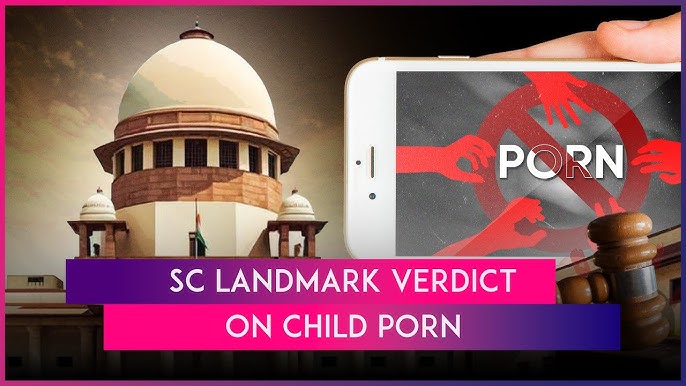The Supreme Court’s recent ruling establishing that mere possession of child pornographic materials constitutes an offence under the POCSO Act and the IT Act marks a significant step forward in the fight against child sexual exploitation in India. In a society grappling with the grim realities of child abuse and exploitation, this ruling not only overturns a controversial Madras High Court judgement but also serves as a strong deterrent to potential offenders.
Earlier this year, the Madras High Court quashed the criminal proceedings against a man who was found with child pornographic content on his phone, arguing that mere possession did not constitute an offence under the POCSO or IT Acts. This decision was deeply problematic, as it created a loophole that could allow individuals to evade accountability by simply not disseminating the illegal material. The High Court’s interpretation failed to grasp the severity of child exploitation crimes, focussing solely on the act of transmission rather than the deeper issue of possession itself. The SC’s decision to reverse this judgement corrects a grave oversight. As Chief Justice aptly noted, child sexual exploitation is a pervasive issue that must be tackled with zero tolerance. This ruling recognises the mere possession of such content as part of the larger problem of child exploitation. Child pornography is not just an isolated, private crime but contributes to a global network of abuse, where victims-often vulnerable children-are violated over and over through the circulation and consumption of exploitative materials.
The SC’s interpretation of Section 15 of the POCSO Act is particularly significant in this case as Section 15 deals with offences related to child pornography, including the storage and possession of such materials. The Court outlined three specific offences under this section: failure to delete or report child pornographic material; transmission, propagation, or display of child pornography; and storage of child pornographic material for commercial gain. Through these distinctions, the SC has created a comprehensive legal framework to address the possession and dissemination of child pornographic materials, treating them as crimes of different degrees depending on the offender’s intent and actions.
A key aspect of the Court’s ruling is its call for legislative reform. The bench recommended that Parliament amend the POCSO Act to substitute the term “child pornography” with “child sexual exploitative and abuse material” (CSEAM), as this terminology more accurately reflects the heinous nature of these crimes. This suggestion by the Court aligns with global trends where laws surrounding child exploitation are increasingly focussing on the victimisation and abuse inherent in such materials. Amending the terminology would also help courts and law enforcement agencies treat child sexual exploitation with the gravity it deserves.
An important element in criminal law is the concept of mens rea, or criminal intent, which the Court addressed in detail. Under the POCSO Act, the intention to transmit or share child pornography can be inferred from the circumstances under which such material is stored or possessed. This approach strengthens the prosecution’s ability to hold offenders accountable, even in cases where transmission hasn’t occurred yet but the circumstances point towards potential distribution. By addressing both actus reus (the actual act of possession or storage) and mens rea (the intent behind it), the Court has provided a nuanced legal understanding focusing on prevention as much as prosecution. It recognises that possession of such material is not a victimless crime and that failing to act against its existence indirectly perpetuates the exploitation of children.
The Supreme Court’s ruling serves as a reminder that tackling child sexual exploitation requires a multi-faceted approach-one that involves not only strict legal provisions but also societal awareness and international cooperation. As technology advances and the internet becomes more pervasive, the avenues for distributing child exploitation material increase. Therefore, India’s legal system must keep pace with these developments to effectively combat such crimes.
Trending Now
E-Paper


